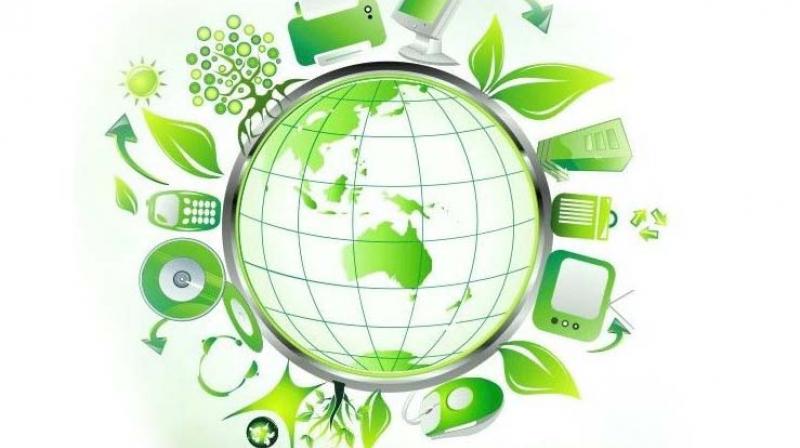Recycling: Gadget to tackle e-waste

To be up-to-date is the 21st century man’s predisposition. But the race to better technology is leaving behind a much bigger problem — e-waste. How does one dispose of the exhausted batteries, where does one dump the obsolete motherboard of one’s old desktop? A close look at the landfills along the edges of the city would give an answer. India, along with Ghana and China, has been identified as being at the most risk from “backyard toxic waste”.
Professor Veena Sahajwalla, director of the Centre for Sustainable Materials Research and Technology (SMaRT) at the University of New South Wales, has invented a new technology to tackle the problem of e-waste.
“Today, e-waste is the fastest growing waste stream worldwide and low-cost processing solutions are of immense value to our environment,” says Prof. Sahajwalla.
Instead of looking at the discarded gadgets as waste, she wants us to look at it as resources for the future. E-waste is full of valuable resources, like precious and base metals, plastics and glass that we can’t afford to waste. The concentration of copper in e-waste, for example, is higher than in virgin ore.
The $1 trillion global electronics industry generated about 42 million tonnes of obsolete equipment in 2014, a potential loss of some $52 billion worth of embedded resources, according to a recent United Nations Environment Programme report.
“Extracting virgin raw materials is expensive and emissions-intensive so we have much to gain, economically and environmentally, by recovering resources from waste streams like e-waste. Second, e-waste also contains toxic elements, so it’s dangerous to stockpile it or divert it to landfill,” Dr Sahajwalla says.
The complex mix of materials and toxic elements in e-waste means resource recovery is technically very challenging and the conventional industrial scale processes available today are very expensive, she acknowledges.
Although some developed countries have imposed regulations requiring e-waste to be recycled, cheaper options are often found by shipping large quantities of e-waste to poorer, less regulated nations, particularly India and China.
“This largely undocumented global trade in e-waste exposes low-paid workers to dangerous contaminants, and communities to serious environmental pollution,” she explains.
Every country meets the challenge of e-waste differently. In countries such as the US, UK and Australia, the challenge is based on replacement cycles and the early obsolescence of the products discarded by the population, and accessibility to industrial scale recycling options or export possibilities.
But in India and China, Prof. Sahajwalla says, there is both a huge uptake of digital devices by the local population — and the waste that comes from discarding and upgrading devices and consumer goods — plus the huge volumes of e-waste shipped in from other parts of the world. “This means that although advanced economies often have regulations governing e-waste recycling, most resource recovery from e-waste is actually done offshore in developed nations.”
At the UNSW’s SMaRT Centre, Prof. Sahajwalla and a team of researchers have built a new process that precisely controls the transformations of the various components of e-waste to produce a range of new value added “green” resources and products.
“The e-waste is crushed to expose its various components, enabling pre-programmed automated drones and robotic arms to pick out its various parts such as plastic casings, resource-rich printed circuit boards (PCBs), glass screens etc. The identification of valuable components is performed by drones, while the sorting is performed by the robotic arms. At lower temperatures, plastic waste can be transformed into printing filaments (a valuable consumable in a rapidly growing market). The sorted PCBs are in themselves a high value commodity, which can be sold to commercial smelters or fed into a small high temperature furnace within the e-waste microfactory. By precise control of the furnace temperature and operating conditions, metals and metal alloys can be selectively produced. All processes operate outside the temperature range at which dangerous furans and dioxin are formed, overcoming risks of toxicity,” she says.
The advantage of this technology is that it is configured to suit the microfactory concept. This, simply put, means that the technology can solve e-waste problems almost anywhere as the microfactories can be deployed almost anywhere in the world.
“This overcomes the need for centralised collection and long distance transport associated with industrial scale e-waste recycling,” the professor points out
Speaking about her project and love for garbage and how her formative years in Mumbai provided the impetus to the invention, she says, “As a child, I used to walk past huge mountains of garbage on the way to school. I imagined what it would take to convert “rubbish” into something more valuable. So, my ambition to transform ‘waste to value’ really goes back to this time in my life.”

